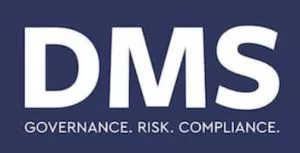The Cayman Islands Limited Liability Companies Law, 2016 (CLLC) will take effect from July 13, 2016.
The Cayman Islands expects that the CLLC will enhance its competitiveness by offering fund sponsors another option for structuring their Cayman funds, with the same familiarity and equivalence of the Delaware Limited Liability Company Act (DLLC) used for their onshore vehicles.
This DMS Advisory primarily addresses the fiduciary responsibilities and fund governance implications of the CLLC; however, the CLLC is not solely intended for structuring private funds. Like the DLLC, the CLLC can be used to engage in virtually any lawful business activity, and structured in virtually any manner, that best suits the needs of stakeholders.
The CLLC is a hybrid structure that combines the features of a Cayman Islands exempted company, and a Cayman Islands exempted limited partnership, with infinite flexibility. In responding to investor demand for an offshore vehicle that mirrors the structure of onshore vehicles, the architects of the CLLC stayed close to the widely regarded and industry-leading DLLC framework.
The CLLC is a corporate body, with a separate legal personality. It has the flexibility to allocate profits and losses to its members, similar to partners in an exempted limited partnership.
The CLLC will operate on the capital commitment and contribution model used in a limited partnership structure and will be ideal for use in private equity funds. Hedge funds will also find the CLLC beneficial, especially in straightforward valuation and administration of a corporate entity which represents investor interests in a capital account, rather than a fixed number of shares. Having said this, it is possible to draft the limited liability company agreement of the CLLC (the "LLC Agreement") to contemplate a fixed number of shares if desired by the stakeholders.
The CLLC is managed by its members or by one or more managers who are not necessarily members. It does not require a board of directors, but this absence does not mean that appropriate fund governance can be neglected. Indeed, its managers will have fiduciary duties to the extent provided in the LLC Agreement, and in cases where the CLLC is used as an investment fund registered with the Cayman Islands Monetary Authority, it will be required to appoint two managers who will have an equivalent role to the directors of a registered investment fund structured as an exempted company.
The flexible structure of the CLLC means that the parties can create an LLC Agreement that includes specific terms that meet the needs of stakeholders. In this regard, the parties can agree the scope of fiduciary duties that a manager owes to the company to suit the commercial requirements negotiated, but there will still be a rigid application of good governance and compliance standards under law. Although the parties can agree to expand or restrict the duty of good faith owed by the manager to the CLLC (and in this regard, we expect that U.S. parties will impose the Delaware implied covenant of good faith and fair dealing), managers will not be able to opt out of the irreducible core standard of willful default and fraud. This should provide assurance to all stakeholders concerned about investor protection.
A Win-Win Proposition
The CLLC provides for conversion or merger of exempted companies into the LLC structure and for the redomiciliation of foreign entities into Cayman as a CLLC. This could prove an instant growth area, once the law takes effect.
The CLLC opens the door for investors to avail themselves of foreign tax reclaim entitlements. This will apply to Cayman funds that convert to the CLLC structure or for a new fund launched as a CLLC.
As a transparent "look-through" vehicle, the CLLC will enable U.S. tax-exempts (and the fund manager) to benefit from tax treaties for eligible markets other than the U.S., while being shielded from Unrelated Business Income Tax.
Foreign investors from domiciles that allow for treaty benefits will also be able to claim tax entitlements, and in such cases the fund manager would be required to apply claim on behalf of any underlying investors.
The synergistic framework of the CLLC vis-à-vis the Delaware structure should prove highly appealing to U.S. managers and legal counsel who may welcome the ease of drafting documents, based on one, known legal concept.
Keys to Success
Looking ahead, the Cayman Islands will strive to make the CLLC as ubiquitous as the DLLC by applying the same proven principles that has made it the leading fund jurisdiction in the world: ease of formation, reasonable fees and reliable jurisprudence.
DMS currently serves as managers to many DLLCs and will continue acting as managers to the new CLLCs using our usual industry-leading fund governance standards.
The content of this article is intended to provide a general guide to the subject matter. Specialist advice should be sought about your specific circumstances.


